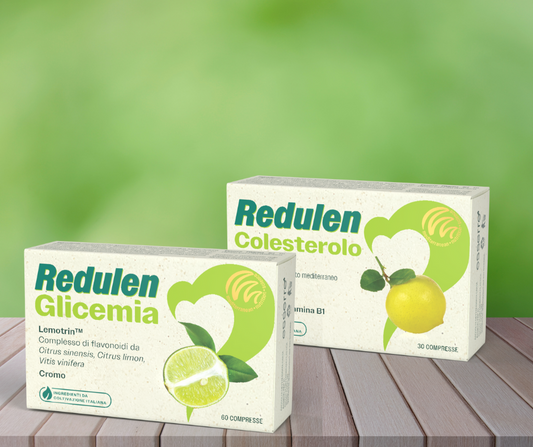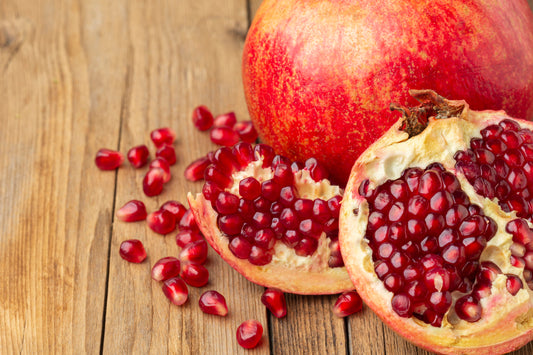The use of fiber during pregnancy is a topic of growing interest in clinical nutrition and maternal health, given its ability to improve digestive health and prevent common disorders in this phase of life for many women, such as constipation. It is therefore worthwhile to delve into the benefits of fiber consumption during pregnancy, its sources, recommended amounts, the consequences of insufficient or excessive intake and some practical tips for incorporating it into your daily diet.
1. Introduction to Dietary Fiber
Dietary fiber is a fundamental component of a balanced diet that, as is known, is not digested by the human intestine but passes through the digestive tract almost intact. It is divided into two main categories, both present in fiber-rich foods: soluble fiber and insoluble fiber .
-
Soluble Fiber : Dissolves in water to form a gel, which helps regulate blood sugar levels and lower cholesterol. Common sources include oats, legumes, fruits, and some vegetables.
-
Insoluble Fiber : Does not dissolve in water and increases stool bulk, aiding bowel movement and preventing constipation. Found in whole grains, nuts, and some vegetables such as carrots.
During pregnancy, consuming adequate amounts of fiber is crucial to maintaining gut health and preventing digestive complications, such as constipation and gestational diabetes.
2. Benefits of Fiber During Pregnancy
a. Prevention of Constipation and Its Consequences
Constipation is one of the most common disorders during pregnancy, affecting up to 40% of women. This phenomenon is caused by hormonal changes, in particular the increase in progesterone, which slows intestinal motility. Fiber, especially insoluble fiber, increases the volume of stool and makes it softer, promoting intestinal regularity. An adequate fiber intake also prevents complications such as hemorrhoids and proctorrhagia.
b. Weight Control
Weight gain during pregnancy is natural, but it should be gradual and controlled. Fiber, especially soluble fiber, promotes prolonged satiety and helps reduce the caloric density of foods. Maintaining a healthy weight reduces the risk of conditions such as gestational diabetes, high blood pressure, and preterm labor.
c. Reduction of the Risk of Gestational Diabetes
Gestational diabetes increases the risk of complications for the mother and baby. A high-fiber diet can help regulate blood glucose levels and improve insulin sensitivity. Soluble fiber, in particular, slows the absorption of sugar into the blood, preventing blood sugar spikes.
d. Improved Cardiovascular Health
During pregnancy, cardiovascular health is essential. Soluble fiber reduces LDL cholesterol levels, improving heart health and reducing the burden on the cardiovascular system.
e. Promoting a Healthy Gut Microbiota
Prebiotic fibers nourish the beneficial bacteria in the gut, promoting a balanced microbiota that is able to produce beneficial molecules, such as short-chain fatty acids (SCFA). A healthy microbiota is associated with a reduced risk of inflammatory diseases, obesity, and allergies in newborns.
3. Recommended Amount of Fiber During Pregnancy
According to the Italian Society of Gynecology and Obstetrics, pregnant women should consume approximately 28g of fiber per day , a higher amount than the recommendation for non-pregnant women, since during pregnancy the body has greater nutritional needs and intestinal motility tends to decrease.
4. Consequences of an Insufficient Fiber Intake
An insufficient intake of fiber during pregnancy can have various consequences , obviously opposite to the benefits previously listed :
-
Chronic constipation: Prolonged constipation can lead to the formation of hemorrhoids, which are common during pregnancy due to increased abdominal pressure and slowed venous circulation.
-
Uncontrolled weight gain: Without adequate fiber intake, women may feel hungry more often, resulting in excessive weight gain.
-
Increased risk of gestational diabetes: Low fiber consumption has been associated with an increased risk of developing gestational diabetes due to the body's reduced ability to regulate blood glucose levels.
5. Risks of Excessive Fiber Intake
Although fiber is generally beneficial, excessive consumption, especially when combined with insufficient water intake, can have negative effects. Too much fiber can cause:
Bloating and gas: Ingestion of large amounts of fiber can cause intestinal fermentation, resulting in bloating and flatulence. However, this situation may be more likely to be caused by pre-existing irritability of the intestine on a psychosocial basis: this is the case of irritable bowel syndrome. Prebiotic soluble fiber is generally well tolerated at high doses even in patients with IBS.
Nutrient malabsorption: Extremely high fiber intake can interfere with the absorption of certain minerals, such as iron and calcium, which are particularly important during pregnancy, causing an antinutrient effect or any medications taken during pregnancy. Again, it is important to discuss with your nutrition professional how and when to consume foods rich in fiber and/or functional fiber.
Diarrhea: In some cases, especially if the patient already suffers from a chronic inflammatory bowel disease, even moderate consumption of insoluble fiber can cause diarrhea, which can lead to dehydration, a potentially dangerous condition during pregnancy. Although it may seem counterintuitive , soluble fiber, through an indirect action on enterocytes and microbiota, can be useful for addressing a problem of diarrheal bowel movements, reducing the frequency of bowel movements and improving stool consistency.
6. Sources of Fiber During Pregnancy
Considering the amount of fiber per 100g of product can be misleading, because some products such as seaweed, spices or aromatic herbs could provide more than 40, 50 or even 80g of fiber per 100g of product, but in everyday life we never consume such high quantities of these foods. However, making a ranking of foods commonly consumed in our country in significant doses, we would have a result like this:
|
SUN DRIED FIGS |
|
18.5 |
|
BEANS, dried |
|
17 |
|
WHOLE RYE SLICES |
|
16.5 |
|
PEAS, dried |
|
15.7 |
|
BARLEY FLOUR, wholemeal |
|
14.8 |
|
BARLEY FLAKES |
|
14.8 |
|
SWEET ALMONDS [PRUNUS COMMUNIS] |
|
14.3 |
|
CHICKPEAS [CICER ARIETINUM], dried |
|
13.8 |
|
LENTILS [LENS ESCULENTA], dried |
|
13.7 |
|
SOY FLOUR, low fat |
|
13.3 |
|
CHESTNUTS, dried |
|
13.1 |
|
DURUM WHEAT [TRITICUM DURUM], wholemeal |
|
12.6 |
|
RYE FLOUR, wholemeal |
|
11.7 |
|
WHOLE WHEAT SEMOLINA PASTA |
|
11.5 |
Legumes are unbeatable in this ranking: there are varieties of chickpeas that can exceed 20g of fiber per 100g of dry product. On average, unhulled dried legumes contain between 15 and 18g of fiber per 100g of product. Whole grains and their derivatives follow closely behind, containing between 6 and 10g of fiber per 100g of dry product. Vegetables contain much less, for the same weight, but we can typically consume larger quantities: artichokes contain about 5g of fiber per 100g of product. Fruit contains less fiber on average, which we can benefit from especially if we consume it with the peel. Both the soluble and insoluble fractions of fiber are normally present in foods.
Whole oats have something that distinguishes them from other cereals, as they have a larger fraction of soluble fiber, represented by beta- glucans , which contribute to the reduction of blood cholesterol, but all whole grains can be part of a healthy diet.
Among vegetables, artichokes are the richest in fiber , exceeding 5g per 100g of product. Peas follow, then some green leafy vegetables such as chicory, fennel, cruciferous vegetables in general, which include broccoli, cauliflower and turnips.
Among fruits, dried ones are very rich in fibre, like legumes but It should not be underestimated that they are also very sugary. In general, apples and pears provide good quantities of fiber, especially if consumed with the peel. Even the albedo of citrus fruits, that is, their white part, is a very interesting soluble fiber, known as pectin.
4. Fiber and Child Health
Fiber intake during pregnancy can positively affect the health of the baby:
-
Improved Baby Gut Microbiota : Prebiotic fiber feeds the beneficial bacteria in the mother's intestinal tract, which can be passed on to the baby during natural birth, reducing the risk of allergies, asthma and autoimmune diseases.
-
Reducing the Risk of Childhood Obesity : A diet rich in fiber could help regulate the child's weight in the first years of life.
-
Prevention of Type II Diabetes Mellitus : Fiber consumption can improve maternal insulin sensitivity and regulate the metabolic environment during fetal development, reducing the risk of type II diabetes in the child.
5. Conclusions
Dietary fiber plays a crucial role in maternal health during pregnancy, helping to prevent common conditions such as constipation and gestational diabetes, as well as promoting good cardiovascular health. In addition, adequate fiber intake has long-term positive effects on the health of the child, improving the health of the gut microbiota and reducing the risk of obesity and metabolic diseases.
For best results, pregnant women should consume a balanced combination of soluble and insoluble fiber from natural food sources such as fruits, vegetables, whole grains, legumes, and nuts, and consider supplementing with functional fiber under the supervision of a nutrition professional.


